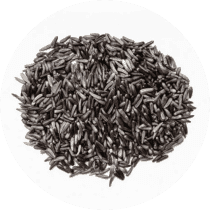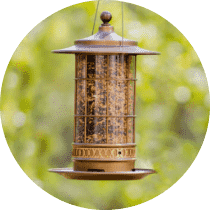Lesser Goldfinch
A species of Siskins and new world goldfinches Scientific name : Spinus psaltria Genus : Siskins and new world goldfinches
Lesser Goldfinch, A species of Siskins and new world goldfinches
Botanical name: Spinus psaltria
Genus: Siskins and new world goldfinches
Content
Description People often ask General Info
 Photo By Alejandro Bayer Tamayo , used under CC-BY-SA-2.0 /Cropped and compressed from original
Photo By Alejandro Bayer Tamayo , used under CC-BY-SA-2.0 /Cropped and compressed from original Description
A common visitor of birdhouses or anywhere with birdseed, the lesser Goldfinch is a small, notch-tailed bird that enjoys gardens and open wooded areas. Its size has made it commonly overlooked, but listen out for its charming, chiming song. Social birds, they are often seen in large groups of hundreds traveling together at a time.
Size
11 cm
Life Expectancy
1-7 years
Nest Placement
Tree
Clutch Size
3 - 6 eggs
Incubation Period
1 brood
Number of Broods
12 - 13 days
Nestling Period
12 - 14 days
Feeding Habits
Lesser Goldfinch primarily consume seeds from the sunflower family, supplemented by fruits like coffeeberry, elderberry, and madrone, as well as cottonwood, alder, sycamore, willow, and oak buds. They feed in small groups, often hanging upside down to access seeds, which they pry open with their bills. Napa thistle is a staple, and they occasionally eat plant lice.
Habitat
Lesser Goldfinch typically inhabits open brushy areas, woodlands, and areas near water like wooded streams. They adapt to a range of altitudes and climates, thriving in thickets, weedy fields, scrublands, and desert oases. Lesser Goldfinch is also comfortable in human-altered landscapes, including suburban parks and gardens. Commonly associated vegetation types include oak, pinyon-juniper, cottonwood, willow, cedar, and pine, as well as chaparral in the western parts of their range.
Nest Behavior
The female lesser Goldfinch builds the nest over 4 to 8 days, with the male staying close by. She collects and weaves plant materials into a cup, which is then lined with soft materials.
Nest Characteristics
Lesser Goldfinch typically nests in cottonwoods and willows near rivers, although a variety of trees and bushes are also used for nesting. The female chooses a location in a fork concealed by leaves, lichens, or grapevines, usually 4 to 8 feet above ground on slender twigs. The nest, a dense cup about 3 inches wide and an inch deep, is constructed from leaves, bark, catkins, cocoons, spiderwebs, lined with hair, feathers, or fibers.
Dite type
Granivorous
People often ask
General Info
Feeding Habits
Bird food type

Black Oil Sunflower Seeds

Hulled Sunflower Seeds

Nyjer
Bird Feeder Type

Large Tube Feeder

Small Tube Feeder

Large Hopper

Small Hopper

Platform
Sounds
Call
Recording location: Mexico
Call
Recording location: United States
Song
Recording location: United States
Song
Recording location: United States
Song
Recording location: United States
Behavior
Lesser Goldfinch exhibit a lively demeanor, marked by rapid movements and tail flicks when foraging. With a distinctive, undulating flight pattern akin to their goldfinch relatives, they are highly sociable, often forming sizable flocks that congregate at nourishment and hydration locales. In the breeding season, males vocally demarcate territories and entice mates with elaborate aerial pursuits and tender courtship rituals, including synchronized perching and mutual bill touching. A demonstration of partnership occurs when males provision their mates with food both pre and post-nest construction.
Distribution Area
This American goldfinch ranges from the southwestern United States (near the coast, as far north as extreme southwestern Washington) to Venezuela and Peru. It migrates from the colder parts of its U.S. range. The lesser goldfinch often occurs in flocks or at least loose associations. 
Species Status
Not globally threatened.